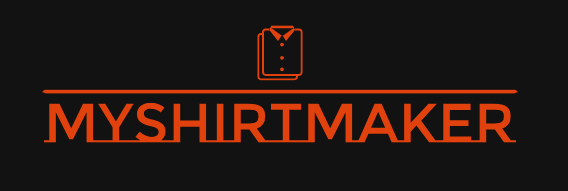Plan Your Glass Fencing Sunshine Coast

Ready to Plan Your Glass Fencing Sunshine Coast project? This guide covers design, budget, compliance, and choosing the right installer for a perfect result.
Key Takeaways:
- Define Your Vision: Clearly articulate your aesthetic goals, functionality needs, and budget for your Glass Fencing Sunshine Coast project.
- Understand Types: Research frameless, semi-frameless, and channel-set options to determine the best fit for your style and budget.
- Prioritize Compliance: Strict adherence to Australian and Sunshine Coast building codes, especially for pools, is non-negotiable.
- Budget Realistically: Account for materials, installation, site preparation, and potential certification fees.
- Choose a Reputable Installer: Partnering with an experienced, licensed, and insured professional is crucial for safety and quality.
- Consider Long-Term Value: Glass fencing offers durability, low maintenance, and increased property value.
Embarking on a home improvement project, especially one that significantly impacts your outdoor living space, requires careful consideration and meticulous planning. For homeowners on the Sunshine Coast, the allure of Glass Fencing Sunshine Coast is undeniable – it promises enhanced aesthetics, unobstructed views, and superior safety for pools, decks, or garden areas. However, turning this vision into a stunning reality requires more than just choosing a style; it demands a comprehensive approach to Plan Your Glass Fencing Sunshine Coast project effectively. This guide is designed to walk you through every critical stage, from initial ideation and budgeting to understanding regulatory requirements and selecting the right professionals, ensuring a smooth process and a beautiful, compliant outcome for your property in Australia.
The appeal of glass fencing lies in its unique ability to be both a robust safety barrier and an almost invisible design element. It allows the breathtaking natural beauty of the Sunshine Coast – whether it’s ocean vistas, lush hinterland, or your own perfectly manicured garden – to remain the focal point, rather than being obscured by traditional fencing materials. By taking the time to Plan Your Glass Fencing Sunshine Coast thoroughly, you not only secure a visually stunning result but also ensure the safety of your loved ones and the long-term value of your investment. Let’s dive into the steps that will bring your transparent vision to life.
Defining Your Vision and Design When You Plan Your Glass Fencing Sunshine Coast
The first, and perhaps most enjoyable, step when you Plan Your Glass Fencing Sunshine Coast is to clearly define your vision. What do you want your glass fence to achieve, both aesthetically and functionally? This initial brainstorming will guide all subsequent decisions.
Aesthetic Goals:
- Frameless, Semi-Frameless, or Channel Set? This is the biggest aesthetic choice. Frameless offers the ultimate seamless look with discreet spigots or hidden channels. Semi-frameless uses slim posts for a defined yet transparent boundary. Channel-set provides a completely clean base. Each has a different visual impact and price point.
- Hardware Finish: Consider stainless steel (polished or brushed), matte black, or custom powder-coated colours for spigots, posts, hinges, and latches. How will these complement your home’s existing colour scheme, decking material, or pool coping?
- Integrated Elements: Are you dreaming of integrated LED lighting along the base or top rail? Do you want a contrasting gate material (e.g., timber gate within a glass fence) or a fully transparent glass gate?
- Flow and Views: Walk around your property. Where do you want to preserve views? How will the glass fence guide movement around your pool, deck, or garden? Sketch out your ideas or use online tools for inspiration.
Functional Needs:
- Purpose: Is this primarily a pool safety barrier, a balustrade for a deck, or a decorative garden partition? The primary purpose will dictate specific compliance requirements.
- Access Points: How many gates do you need? Where should they be positioned for convenient access while maintaining security and compliance?
- Site Challenges: Are there slopes, uneven ground, existing structures, or obstacles that the fence needs to navigate? A professional will address these, but noting them in your plan helps with early design considerations.
By clearly articulating your vision at this initial stage, you provide a solid foundation for your chosen Glass Fencing Sunshine Coast installer to work from, ensuring their proposals align perfectly with your aspirations and helping to streamline the entire project.
Budgeting for Your Glass Fencing Sunshine Coast Project
Once your vision begins to take shape, the next crucial step when you Plan Your Glass Fencing Sunshine Coast is to establish a realistic budget. Glass fencing is a premium product, and while it offers excellent long-term value, understanding the cost components is vital.
Key Cost Drivers:
- Type of Glass Fencing: Frameless is generally the most expensive due to thicker glass (12mm) and specialized hardware. Semi-frameless (8mm-10mm glass) offers a more economical option. Channel-set can be comparable to frameless, depending on site conditions and excavation.
- Linear Metres: The total length of fencing required is a primary cost factor.
- Glass Thickness and Finish: While 10mm or 12mm toughened glass is standard for balustrades and pool fences respectively, any custom finishes (e.g., low-iron glass for ultimate clarity, frosted panels) will add to the cost.
- Hardware Quality and Quantity: The number of spigots, posts, hinges, and latches, as well as their material (e.g., marine-grade stainless steel is crucial for the Sunshine Coast‘s coastal environment) and finish, will impact the price.
- Site Preparation: Costs can increase if extensive ground levelling, concrete pouring, deck reinforcement, or removal of existing structures is required. Access to the site can also influence labour costs.
- Gates: Each gate adds to the cost due to specific hardware (self-closing hinges, self-latching mechanisms) and installation complexity.
Hidden Costs to Consider:
- Pool Safety Certificate: For pool fencing in Australia, a certified pool safety inspector will need to inspect the finished fence and issue a certificate. This is a separate fee.
- Council Approvals: While many glass fence installations might fall under exempt development, always check with your local Sunshine Coast council for any specific approval requirements for your property, especially for new structures or significant alterations.
- Contingency: Always allocate a contingency budget (10-15% of the total project cost) for unforeseen circumstances or minor changes during the installation process.
Obtain detailed, itemised quotes from several reputable Glass Fencing Sunshine Coast providers. Compare not just the total price, but what exactly is included in each quote to ensure you’re comparing apples to apples. Discuss your budget openly with prospective installers; they may be able to suggest cost-saving alternatives without compromising essential safety or aesthetics.
Understanding Compliance and Safety When You Plan Your Glass Fencing Sunshine Coast
Compliance and safety are non-negotiable aspects when you Plan Your Glass Fencing Sunshine Coast, especially for pool enclosures and elevated decks. Australian Standards and local Queensland regulations are stringent, designed to protect lives and prevent accidents.
Pool Fencing Regulations:
- AS 1926.1-2012: This national standard is the cornerstone for safety barriers for swimming pools. Your glass pool fence must comply. Key elements include:
- Minimum Height: 1200mm (1.2 metres) from the finished ground level to the top of the fence.
- Gaps: Maximum 100mm gap under the fence and between glass panels.
- Gates: Must be self-closing and self-latching from any open position, opening outwards from the pool. Latch release points must be at a minimum height of 1500mm or shielded.
- Non-Climbable Zone (NCZ): No permanent climbable objects (e.g., garden beds, BBQ, pool pump) within 900mm of the fence.
- Queensland Specifics: The Building Act 1975, Building Regulation 2021, and Queensland Development Code MP 3.4 further detail these requirements.
Balustrade Regulations (Decks, Balconies, Stairs):
- AS 1288-2006 (Glass in Buildings): Addresses glass type, thickness, and installation methods.
- AS 1170.1 (Structural Design Actions): Dictates load-bearing capacities.
- Height: Typically a minimum of 1000mm high for balustrades on decks and balconies.
- Toughened Safety Glass: Only toughened glass is permitted for these applications, designed to shatter safely if broken.
The Role of Your Installer: A reputable Glass Fencing Sunshine Coast installer will be well-versed in all these regulations. They will:
- Conduct a thorough site assessment to identify any potential compliance issues specific to your property.
- Design your fence to meet all required standards.
- Use certified materials and installation techniques.
- Advise you on any necessary modifications to your property (e.g., moving a garden bed) to achieve compliance.
Do not compromise on compliance to save costs. Non-compliant fences can lead to fines, insurance issues, and, most importantly, safety hazards. Ensuring compliance from the initial planning stage is a crucial step to Plan Your Glass Fencing Sunshine Coast successfully and responsibly.
Choosing the Right Professional When You Plan Your Glass Fencing Sunshine Coast
The success of your Glass Fencing Sunshine Coast project hinges significantly on choosing the right professional installer. This is not a DIY job for most homeowners, given the weight of the glass, the precision required, and the critical safety and compliance aspects.
Key Qualities to Look For:
- Experience and Specialisation: Seek companies that specialise in glass fencing, particularly on the Sunshine Coast. Their experience with local conditions (e.g., salt spray, humidity) and council requirements is invaluable. Ask to see their portfolio of completed projects.
- Licensing and Insurance: Verify that the company is fully licensed to perform building work in Queensland and carries comprehensive public liability insurance. This protects you in case of accidents or damage during the installation process.
- Reputation and References: Check online reviews (Google, local directories). Ask for references from previous clients and follow up on them. Positive testimonials are a strong indicator of reliability and quality.
- Knowledge of Compliance: As highlighted earlier, their expertise in relevant Australian Standards and local Sunshine Coast regulations is non-negotiable. They should be able to clearly explain how their proposed design meets these standards.
- Detailed Quotation: A professional installer will provide a clear, itemised quote that breaks down all costs, including materials, labour, hardware, and any additional services like site preparation or clean-up. Be wary of vague or unusually low quotes.
- Warranty and After-Sales Service: Inquire about warranties offered on both materials and workmanship. A good warranty provides peace of mind. Also, ask about their after-sales support in case of any issues or adjustments needed post-installation.
- Communication: Choose an installer who communicates clearly, responds promptly to your questions, and makes you feel comfortable throughout the process.
By carefully vetting potential installers and engaging in a thorough discussion about your needs and their capabilities, you can confidently select the right partner to Plan Your Glass Fencing Sunshine Coast project and bring your transparent vision to a safe and stunning reality. This meticulous selection process ensures that your investment yields a beautiful, long-lasting, and compliant addition to your home in Australia.








